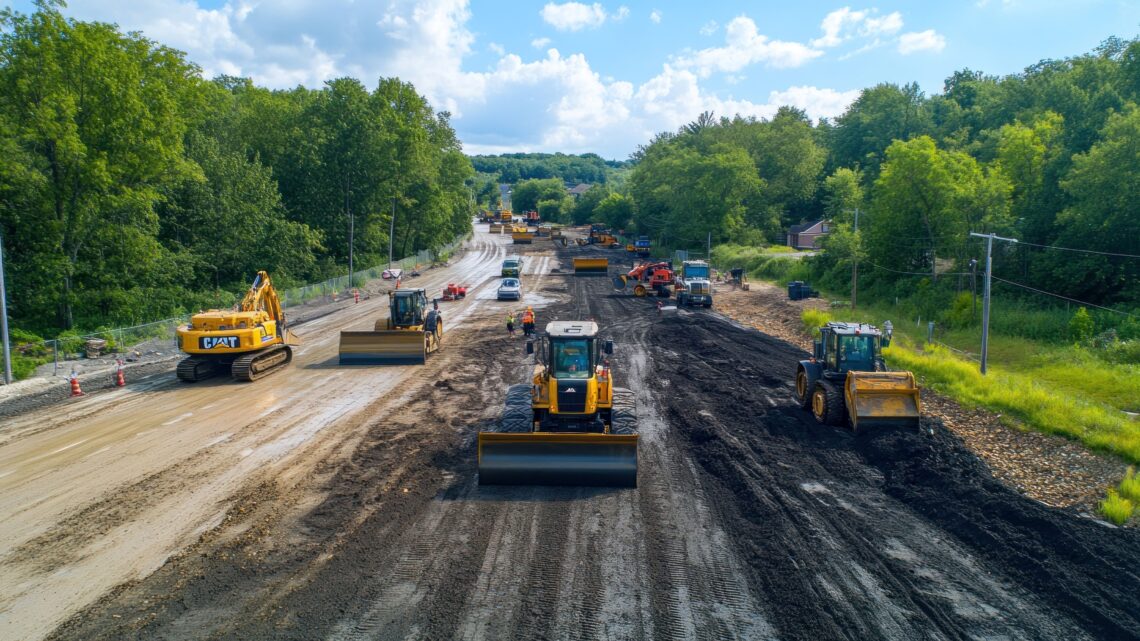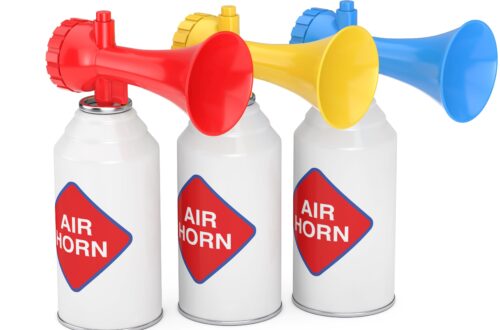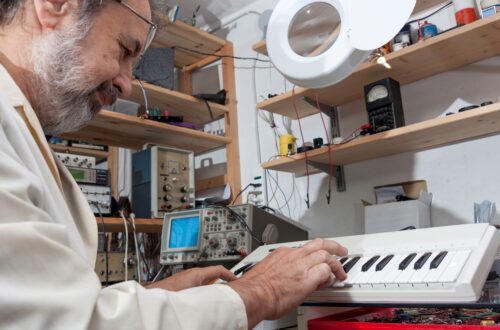
Audible Signaling for Multi-Vehicle Job Sites
Keeping a multi-vehicle job site safe is no joke. Picture this—excavators, dump trucks, forklifts, and cranes all buzzing around in a single space. It’s like a well-choreographed dance, but with tons of steel, noise, and danger. That’s where audible signaling steps in like a traffic cop with a megaphone, helping prevent chaos and keeping everyone in the loop. Let’s dive deep into how audible signaling works, why it’s so important on job sites, and how it can literally be the difference between a smooth operation and a serious accident.
What Is Audible Signaling Anyway?
Audible signaling is a fundamental way of communication on busy job sites, and it’s exactly what it sounds like—using sound to convey important information. Unlike visual signals that rely on sight, audible signals cut through the noise and distractions to alert workers and operators immediately. These signals come in various forms, from the familiar reverse alarms on trucks to horn blasts and high-pitched beeps, all designed to grab attention quickly and convey critical messages that keep everyone safe. The key is that sound travels around obstacles and through dust or poor lighting, making it an essential safety tool in complex, noisy environments.
Think about the constant beeping you hear when a large vehicle like a dump truck or excavator is backing up. That repetitive, unmistakable noise is a classic example of audible signaling at work. It’s engineered to be loud and recognizable so anyone nearby knows to stay clear or prepare to move. Unlike casual sounds, these alarms are carefully designed to be distinct from the ambient noise, preventing confusion and ensuring that workers recognize the warning immediately. This kind of signaling relies heavily on consistency and volume, helping to reduce accidents in high-risk zones by giving people the time they need to react.
Beyond just warning about moving vehicles, audible signaling can also communicate a range of other messages, such as emergency alerts, equipment start-ups, or even instructions in some cases. Some advanced systems use voice messages or varying tones to provide clearer context, which can be especially helpful when multiple types of machines are operating simultaneously. This versatility makes audible signals invaluable not just for safety, but for improving coordination on job sites where every second counts. Workers rely on these sounds as part of the “language” of the site, helping them anticipate movements and changes without needing to see everything happening around them.
Ultimately, audible signaling is an indispensable part of modern job site safety, serving as a constant audio companion that protects lives and enhances efficiency. It fills in the gaps that visual warnings can’t cover, especially in environments where visibility is limited or workers are focused on demanding tasks. By making sure important messages are heard loud and clear, audible signals create a safer, more predictable workspace where both people and machines can operate in harmony.
Why Audible Signals Are Crucial on Busy Job Sites
| Benefit | Description | Example Situation | Typical Audible Signal | Impact on Safety and Workflow |
| Immediate Awareness | Alerts workers instantly to nearby movements or hazards | Truck backing up near a pedestrian | Reversing beeping alarm | Allows workers to react immediately, preventing accidents |
| Safety in Motion | Prevents collisions by providing timely warnings | Forklift crossing a busy intersection | Horn honk or multi-tone beep | Helps operators and workers avoid dangerous contact points |
| Non-Visual Alerts | Functions without requiring line of sight | Operator working behind a container | Voice annunciator or siren | Ensures safety even when visual cues are blocked or missed |
| Noise Penetration | Cuts through ambient site noise | Noisy construction with jackhammers | High-frequency or white noise beep | Overcomes loud background noise so signals are still heard |
| Standardized Signals | Uses consistent sounds understood by all site personnel | Different vehicles sharing a site | Uniform backup alarms | Reduces confusion, ensuring everyone knows exactly what the sound means |
Types of Audible Signals Used on Construction Sites
- Backup Alarms: These alarms warn workers and pedestrians when a vehicle is reversing. The typical sound is a repetitive “beep-beep-beep” that is loud enough to cut through the noise of the construction site. They are essential because large vehicles often have significant blind spots, and these alarms alert anyone nearby to keep a safe distance.
- Horns: Horns serve as quick attention-grabbing signals. They emit a short, loud honk that can immediately alert workers or other operators about sudden movements, hazards, or the need to stop or proceed. Horns are often used in urgent situations where immediate response is required.
- Multi-tone Beepers: Unlike standard backup alarms, multi-tone beepers use alternating or varying tones. This helps differentiate between various types of equipment or signals, making it easier for workers to understand exactly what kind of machine is moving or what action is about to take place. These beepers reduce confusion, especially on sites with many different vehicles operating simultaneously.
- Voice Annunciators: These are advanced audible signals that deliver verbal instructions or warnings. Instead of simple beeps or horns, voice annunciators provide clear spoken messages such as “Vehicle backing up” or “Caution, crane operating.” This helps ensure the message is unmistakable and understood by everyone nearby, reducing misinterpretation.
- Sirens: Sirens are reserved for emergency or high-priority alerts. They produce a loud, wailing sound designed to grab immediate attention and signal urgent danger. Whether it’s for evacuation warnings, equipment failure, or other critical hazards, sirens alert all personnel on site that they need to take action right away.
- White Noise Alarms: These are a newer style of audible signals that use a whooshing or white noise sound instead of the traditional beeping. The goal is to provide an effective warning that is less irritating to workers but still easily heard over background noise, reducing alarm fatigue.
- High-Frequency Beeps: These alarms emit a high-pitched tone that stands out in noisy environments. They are particularly useful on sites with loud ambient noise where lower-frequency sounds might get drowned out.
- Intermittent Beeps: Some audible signals use an on-and-off pattern to differentiate from constant alarms. This can help convey different types of warnings, such as a machine starting up versus a vehicle reversing.
- Continuous Alarms: Certain situations require a continuous sound to maintain attention for longer periods, such as during ongoing hazards or when workers need to remain alert for an extended time.
When Visual Signals Aren’t Enough
Visual signals such as flashing lights and warning signs play an important role on job sites, but they have a major limitation—they only work if you actually see them. On busy construction sites, your attention is often focused elsewhere. You might be studying a blueprint, operating heavy machinery, or navigating through a cloud of dust and debris that obscures your view. In these cases, relying solely on visual cues can leave workers vulnerable to hazards that they don’t even realize are nearby. This is where audible signals truly shine, filling in the gaps that visuals can’t cover.
Imagine a worker operating a crane who’s focused on lifting a heavy load while standing in the cab. Their eyes are glued to controls and load indicators, not scanning the site for flashing lights. Meanwhile, a truck is backing up close by, and the only warning is a loud reversing beep. That beep cuts through the noise and distractions, alerting the operator and others nearby immediately, even though no one might have seen a light signal. Audible signals work around the clock and under all conditions, making sure that important safety messages are delivered no matter where your eyes are.
Dust, fog, poor lighting, and physical obstructions can further limit the effectiveness of visual warnings. On a dusty site or during early mornings and late evenings, visibility might be low, and flashing lights can easily be missed or ignored. Even bright lights struggle to penetrate thick clouds of dust or heavy rain, but sound waves travel through these obstacles, reaching workers wherever they are. This means audible signals are not just helpful but essential to maintain safety when environmental conditions turn challenging.
Ultimately, audible signaling acts like a constant guardian on the site, providing real-time, reliable warnings regardless of what workers are doing or where they’re looking. It’s a vital communication tool that complements visual alerts, ensuring that no one is caught off guard. On noisy, chaotic job sites, sound is often the only way to get immediate attention and prevent accidents before they happen.
Common Scenarios Where Audible Signals Save Lives
| Scenario | Challenge | Audible Signal Used | Purpose of Signal | Safety Impact |
| Vehicle Reversals | Blind spots where drivers can’t see pedestrians | Constant repetitive beeping | Warn pedestrians and workers that the vehicle is backing up | Reduces risk of accidents in vehicle blind zones |
| Blind Corners | Limited visibility due to containers, walls, or equipment | Short alert beeps or horns | Alert others that a vehicle or worker is approaching a hidden area | Prevents collisions and unexpected encounters |
| Cranes Swinging Loads | Fast-moving loads that pose danger to anyone underneath | Voice annunciators or sirens | Signal that the crane is operating and loads are moving overhead | Keeps personnel clear of hazardous zones beneath the load |
| Heavy Equipment Startup | Sudden activation of large machinery | Loud horn blast or startup alarm | Notify workers nearby that equipment is powering on | Prevents workers from being caught off-guard or too close |
How Multi-Vehicle Environments Get Complicated
- The sheer number of machines operating at once creates a constant, overwhelming noise level that makes it difficult to distinguish important sounds from background clutter.
- Workers often wear hearing protection like earmuffs or earplugs, which, while necessary to prevent hearing damage, also reduce their ability to hear critical audible signals clearly.
- Radios and communication devices are constantly buzzing and transmitting, adding another layer of noise that competes with warning sounds and alarms.
- Engines from multiple heavy vehicles such as dump trucks, loaders, cranes, and excavators produce deep, roaring sounds that blend together, making it hard to isolate individual alarms or beeps.
- The combination of these sounds creates a chaotic auditory environment similar to a loud concert, where normal conversations and important alerts struggle to get through.
- Background construction noise varies constantly, from drilling and hammering to metal clanging and vehicle movement, which can mask or drown out standard audible signals.
- Different types of machinery emit various sounds at different frequencies and volumes, requiring signal systems to be carefully calibrated to stand out without adding to the noise pollution.
- Overlapping alarms from multiple vehicles operating nearby can cause confusion, making it unclear which machine is signaling or where the hazard is located.
- Environmental factors like wind, weather, and site layout (with barriers, walls, or large piles of materials) can distort or block sounds, further complicating signal audibility.
- Workers’ focus on complex tasks means their attention may not always be on the surrounding sounds, necessitating signals that are unmistakable and urgent.
- Fatigue and sensory overload from continuous noise exposure can lead to alarm fatigue, where workers start to ignore or become desensitized to audible warnings.
Challenges With Sound on Job Sites
Audible signals are essential for safety, but they come with their own set of challenges that can complicate their effectiveness on busy job sites. One major issue is noise pollution. When too many alarms, horns, and beeps are going off simultaneously, workers can become overwhelmed or desensitized to the sounds. This phenomenon, often called alarm fatigue, means people start tuning out the alerts, which defeats the purpose of having them in the first place. If every vehicle and piece of equipment is constantly beeping or sounding alarms, the signals lose their urgency and can blend into the background noise, creating a dangerous environment.
Another significant problem involves hearing protection. Construction workers often wear earmuffs or earplugs to protect their hearing from the constant roar of machinery and heavy equipment. While this protection is vital, it also muffles important audible signals like backup alarms or horn blasts. If workers cannot clearly hear these warnings, their ability to respond quickly is compromised. This conflict between hearing safety and situational awareness is a tricky balance that job sites need to address with smarter signaling solutions or better protective equipment.
Signal overlap also causes confusion. On a multi-vehicle site, it’s common for different machines to use similar-sounding alarms. When multiple vehicles sound their backup beeps or horns near each other, it can be difficult to determine which vehicle is signaling or what action is required. This overlap muddles communication and can lead to dangerous misunderstandings or delays in reaction. Distinguishing between signals becomes critical, especially in tight or complex workspaces where every second counts.
Lastly, environmental factors add another layer of complexity. Wind, rain, and the physical layout of a job site — with barriers, large equipment, and structures — can distort or block sounds. Even the best-designed audible alarms may fail to reach workers in certain spots, leaving blind zones where hazards go unnoticed. These challenges mean that audible signaling must be carefully planned, maintained, and integrated with other safety measures like visual alerts or wireless communications to ensure it remains effective across the entire site.





